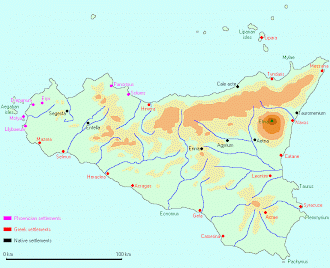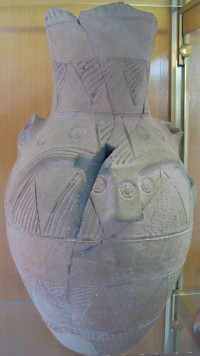Sicily (1)
Q1460Sicily: large and rich island opposite the Italian mainland. In Antiquity, it was settled by Phoenicians and Greeks, and contested by the Carthaginians, Romans, Ostrogoths, and Byzantines.
Prehistory

According to legends recorded by Greek historians like Thucydides,note Sicily was first occupied by the tribe of the Sicanians, after whom the island was called Sicania. The Elymians are said to be Trojans that settled in Entella, Segesta, and Eryx after the fall of Troy; a bit later or earlier, the Siculians crossed from Italy to the island, defeated the Sicanians and pushed them to the west.
The words Sicanians and Siculians are almost identical and may be no more than a western and an eastern pronunciation of the same name. Greeks had some difficulty with the /n/ and /l/ in foreign tongues.note Yet, there appears to be some historical truth behind these legends.

Archaeologists have shown that in the fourteenth and thirteenth centuries, the Mycenaean Greeks had contact with a native Bronze Age culture in the east of the island. Memories of this age live on in several stories about the Cretan king Minos, who is said to have died in Heraclea Minoa, a town in western Sicily. Perhaps Homer's Odyssey contains other echoes from the bronze age, but we must not overstress this point.
After some four or five centuries, the old native Bronze Age culture still existed in the western part of Sicily. Even later, the Greeks recognized that the western native population differed from the eastern natives because their culture had retained some archaic traits. What had happened is probably this: during the Mycenaean age, the native culture in the east had started to change, and groups of more conservative people had moved to the west. Trade with the Phoenicians during the Dark ages may have accelerated the development of the eastern natives. When the Greeks arrived (and when we start to have written sources about Sicily), there was an archaic native community in the west, called Sicanians, whereas the eastern natives, the Siculians, had a different, more advanced culture.